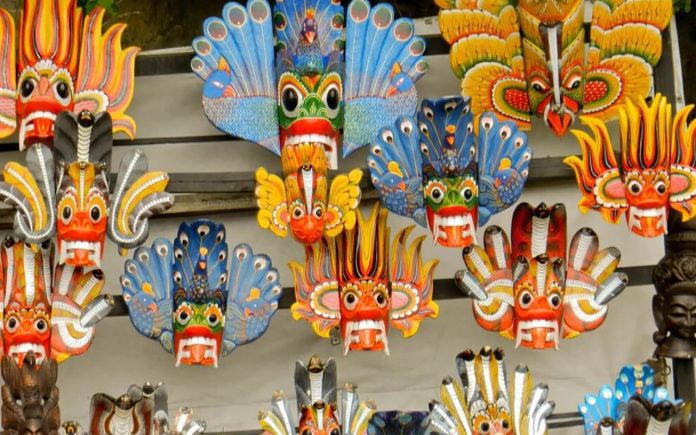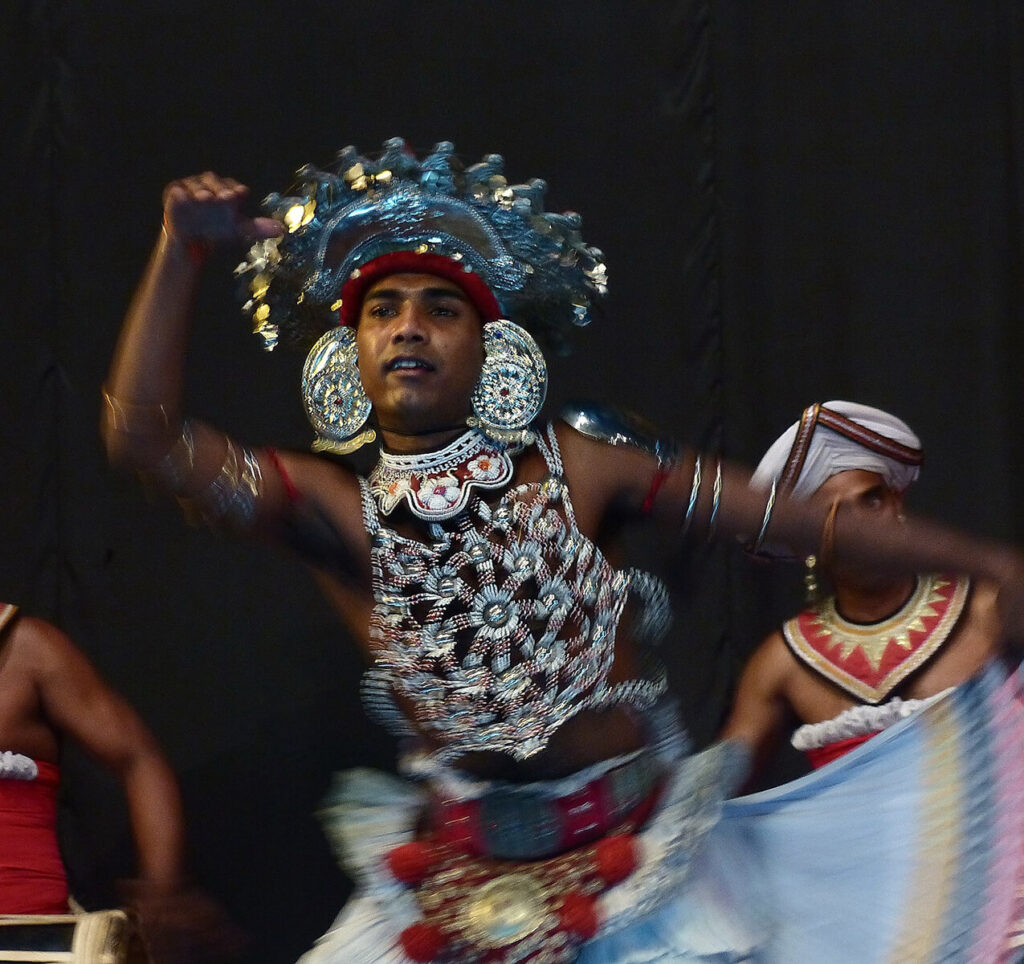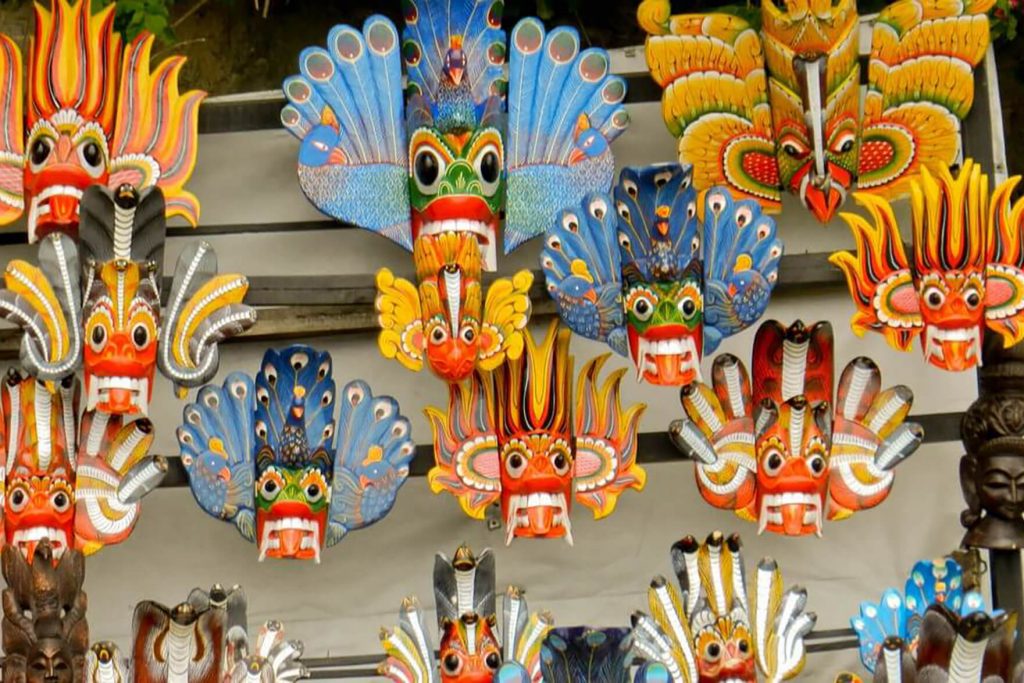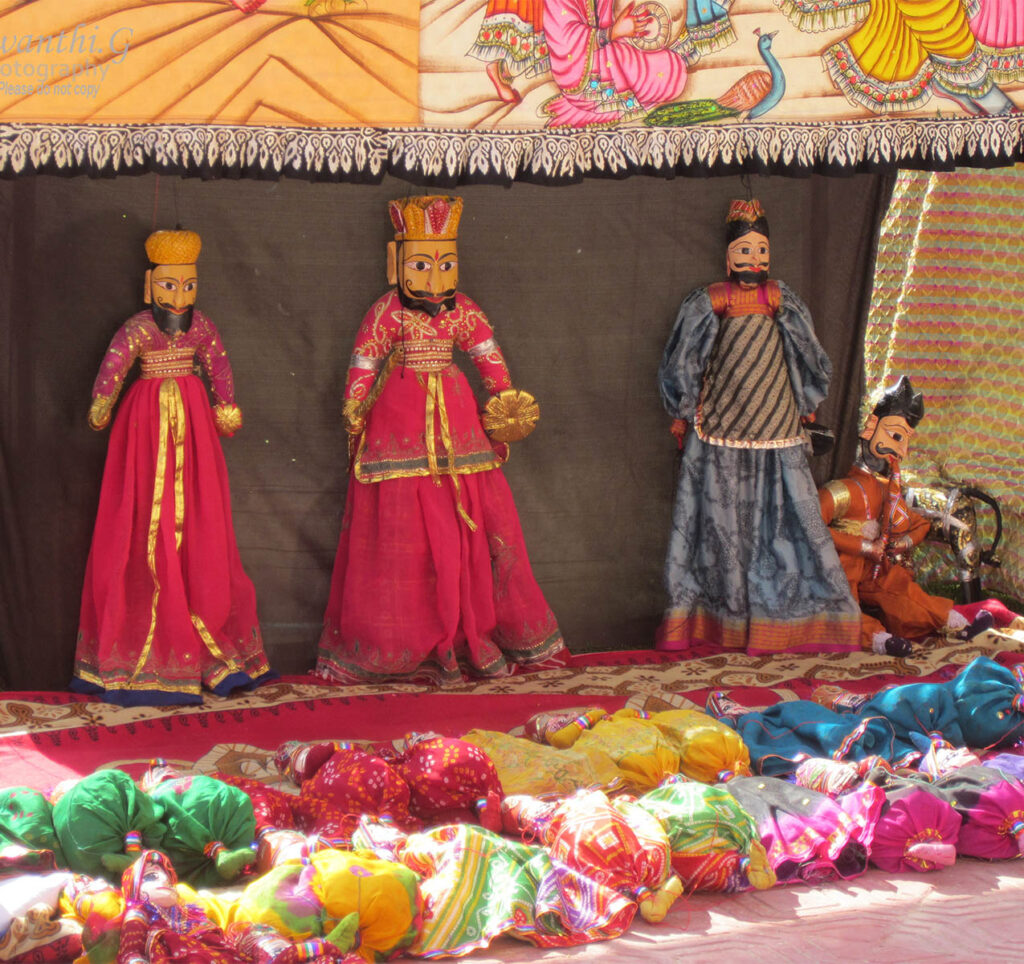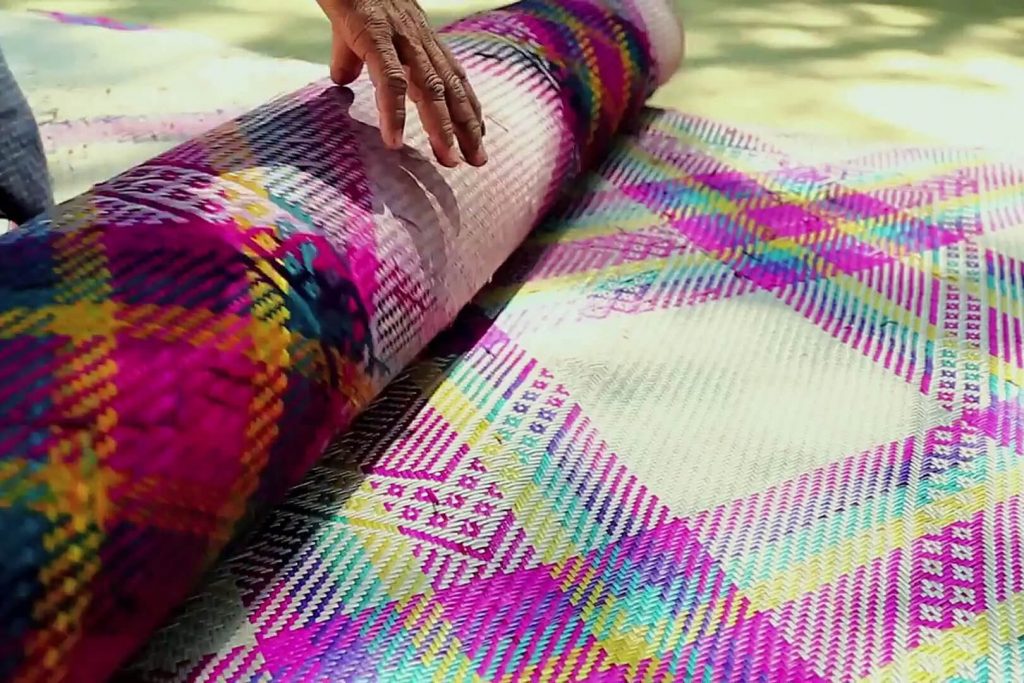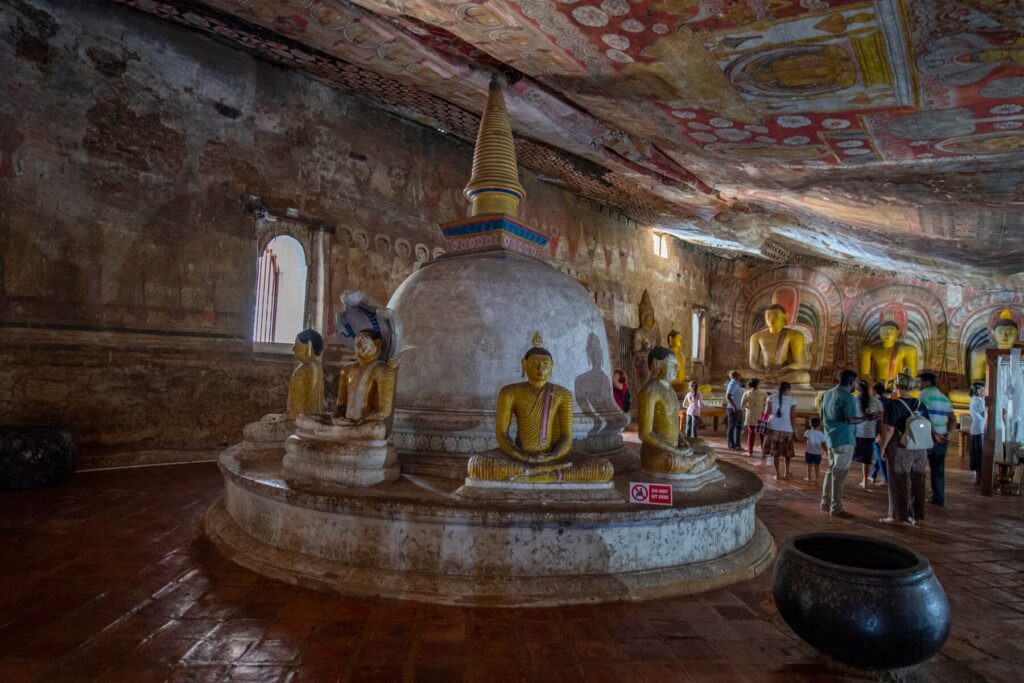The extent of the rich tapestry of Sri Lankan culture is still relatively unknown to the outside world. There’s a myriad of artistic experiences to be discovered by those who visit. From rhythmic beats of traditional drums ushering in sacred relics on the backs of elephants to Devil masks designed to repel evil spirits, there are layers upon layers of arts and crafts woven into the fabric of this vibrant culture. The traditional craftsmanship of making Dumbara mats and the traditional art of string puppet drama have UNESCO Intangible Cultural Heritage of Humanity status. Do not miss out on artistic Sri Lanka. Explore this colourful, rhythmic and ornate world.
Cultural dance
From the humble traditional village rituals that expel demons to the cultural extravaganza of Esela Perahera, dance is a manifold act on the island. And, if you are lucky, you will see a perahera, a procession of vibrant dancers, including fire spinners and whip crackers. Temples and devales of the island celebrate holy events with elaborate processions throughout the country.
The two main variations of cultural dance are Upcountry and Lowcountry. Upcountry or Kandyan dancing is more popular due to the cultural significance of Kandy.
Kandy is the gateway to the hill country and a sacred city. It is home to the Temple of the Tooth, which houses the tooth of Buddha. This ancient kingdom once flourished as the last-standing capital of Sri Lanka before falling to the British.
Kandyan dance performances incorporate florid costumes and traditional drums that can resonate and rumble to crescendos. However, the most extravagant dance performances happen during the Kandy Esela Perahera.
It is a grand procession that dates back to the 3rd Century BC, which parades the Tooth Relic of Buddha through the streets of Kandy. It is not just a parade of dance, drums and elephants but a ritual requesting rain from the gods. The festival encompasses several parades of devices dedicated to the four guardian gods of the island before the finale on the night of the full moon. It takes place from July to August every year.
Mask-making
Sri Lankan traditional wooden masks are unique as they are extraordinary. Used for rituals, drama and dance, they can look grotesque, menacing or whimsical. There are mainly three types of masks – Raksha, Sanni and Kolam.
Raksha masks are the most prevalent, used in dance performances and processions. There are 24 forms of Rakshas. Sanni masks are for exorcisms and healing rituals. In folk tradition, there are 18 sannis or diseases. Kolam masks are a more recent invention dating back to colonial eras. These get used for folk plays and theatric performances.
The masks are carved with balsa wood and painted with detail in bright colours. You can see this intricate process in locations in the South, like Ambalangoda, famous for mask-making.
Rukada Natya (string puppet drama)
Rukada Natya is a folk drama style in Sri Lanka performed using string puppets. It is a UNESCO Intangible Cultural Heritage. These provide light entertainment and moral lessons to village communities. The art form is hereditary to Gamwari lineage familial groups in the southern and southwestern coastal areas of Sri Lanka. Puppeteers make wooden puppets, polish, paint, and dress them in various costumes.
The performers recite dialogues and songs as they move the puppets. Although the origin of Rukuda Natya is uncertain, some researchers believe that migrants from southern and southwest India might have introduced the art to the island several centuries ago. The stories and themes come from folktales, Buddhist stories, ancient literature, historical narratives and trivia with humorous anecdotes from contemporary life or ‘nadagam’, an extinct form of folk opera.
Dumbara Rata Kalala
Against the backdrop of the misty Knuckles Mountain Range in the Central Hills is the beautiful Dumbara Valley. Villages in the valley are famous for their Dumbara mats. They are made from fibres of the hana plant and decorated with motifs and designs using natural dyes. These traditional hand-made mats are often used for sleeping and as wall hangings, tapestries or cushion covers. These are available to purchase across the country.
Beeralu Lace
Bobbin lace was first introduced to Sri Lanka by the Portuguese during the 16th Century. Predominantly practised on the southern coastal regions of the island, it is a unique cottage industry. Watching intricate lace designs come to life through this preserved tradition by skilled craftsmanship is an experience not to miss when visiting the South.
Laaksha
This timeless art of lacquerwork is supposed to be millennia old. From flag poles to jewellery boxes, you can find woodwork decorated with Laaksha still made in the central and southern regions of the island. Wax derived from the Lac beetle, deposited as resin on trees, is the original base material. However, today, materials have evolved while preserving the technique. The art form sets Laaksha apart from other woodcraft with its shiny and colourful look.
Paintings of Sri Lanka
Ancient temples and heritage sites of the island showcase some of the most traditional paintings of Sri Lanka. These paintings cover temple ceilings and walls, depicting stories from Buddhist culture. Sigiriya frescoes and the Dambulla cave complex are some of the finest examples. Walk into any Buddhist temple in the country, and you will see both olden and modern artwork of Sinhala Buddhist tradition.
Artistic Tour of Sri Lanka with Blue Lanka Tours
The essence of a culture and nation is in its artwork. Whether fire-spinning dancers or sinister-looking masks, the island’s celebrated art forms are intriguing and mesmerising. Blue Lanka Tours offers a closer look for you to understand the arts that define Sri Lankan identity. We craft bespoke and authentic experiences that bring you closer to the artistry, craftsmanship and people. Our sustainability advocacy positively promotes the traditional art forms of Sri Lanka and influences their survival. Let us know how you want to experience art in Sri Lanka.


